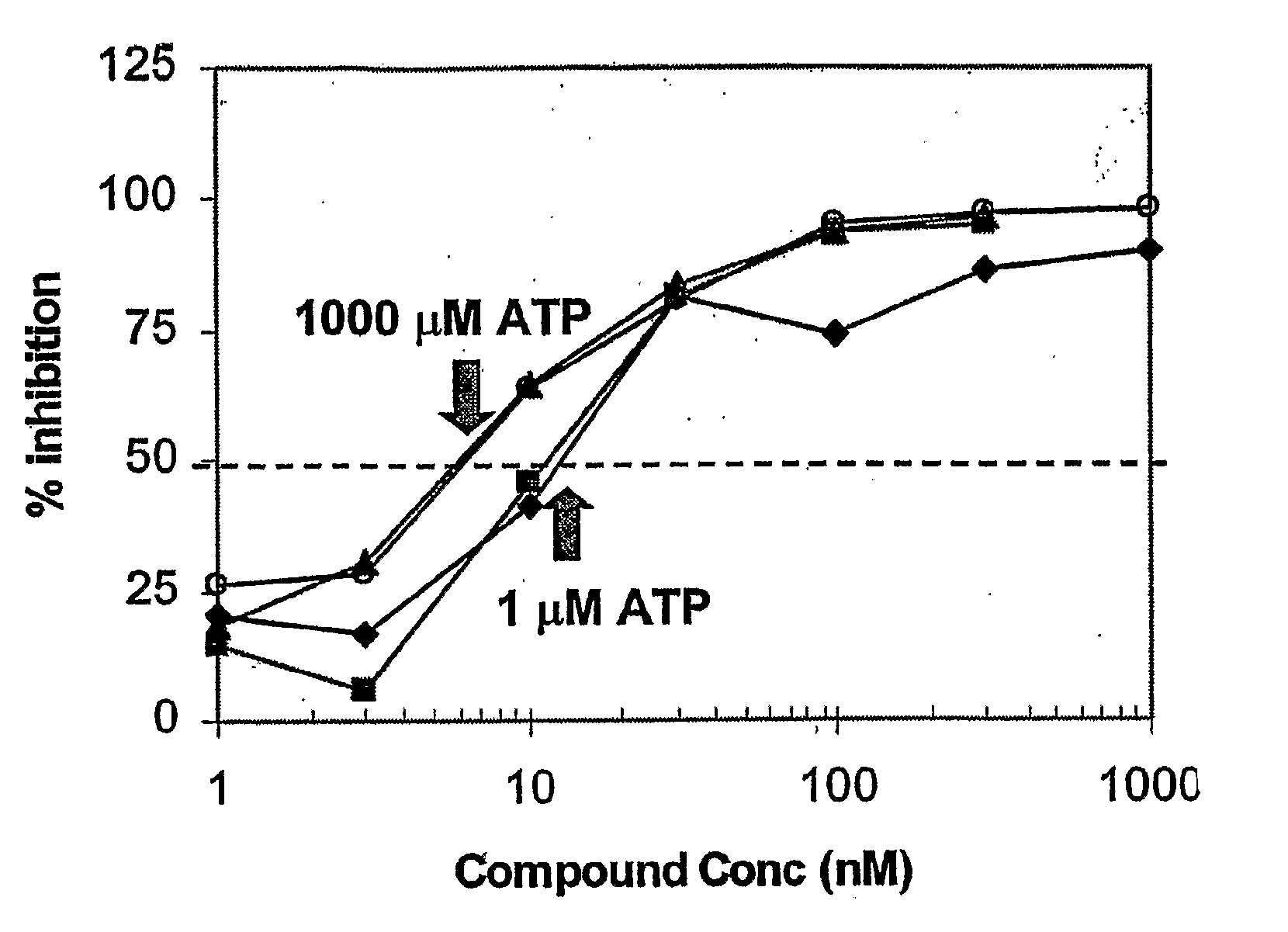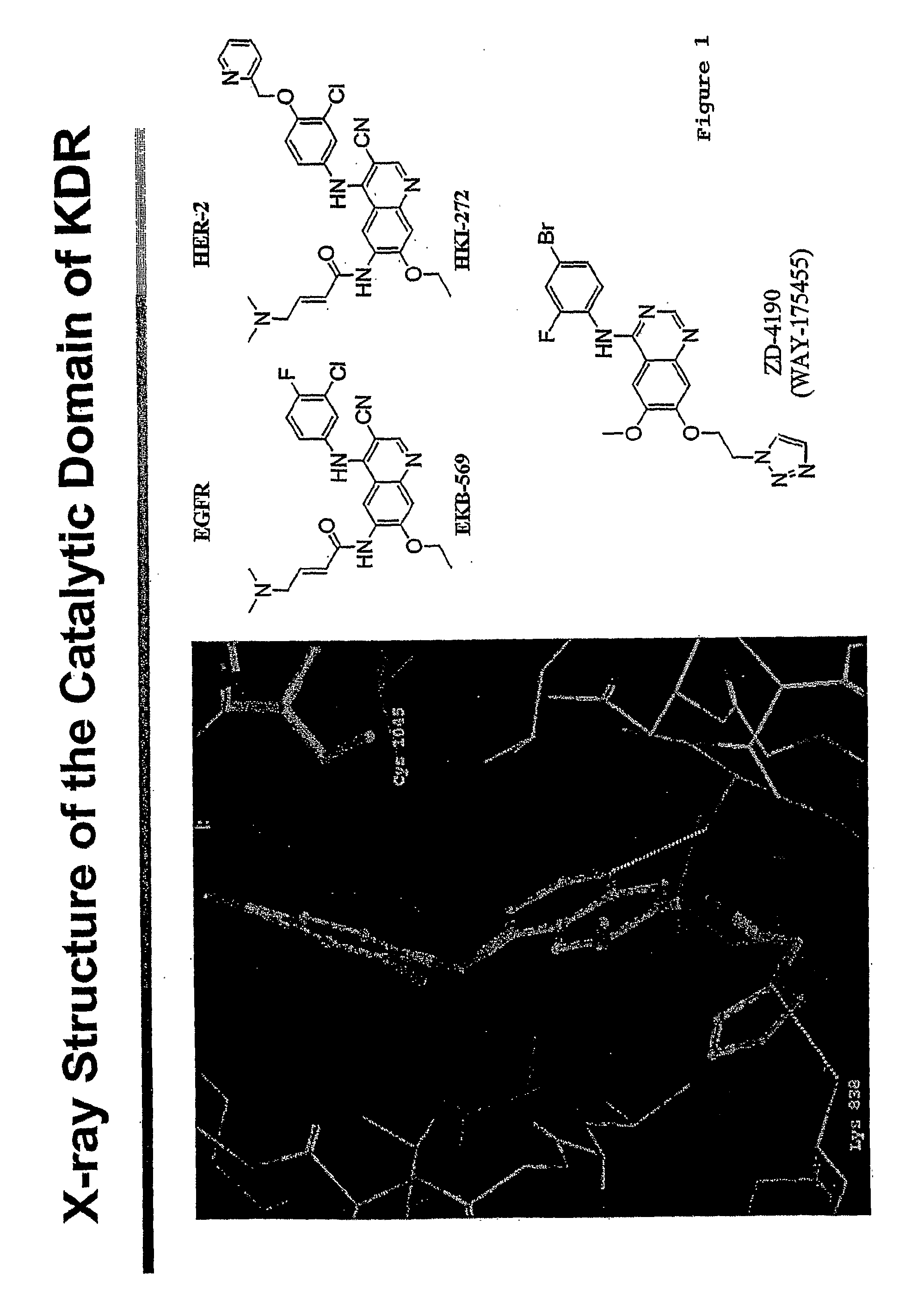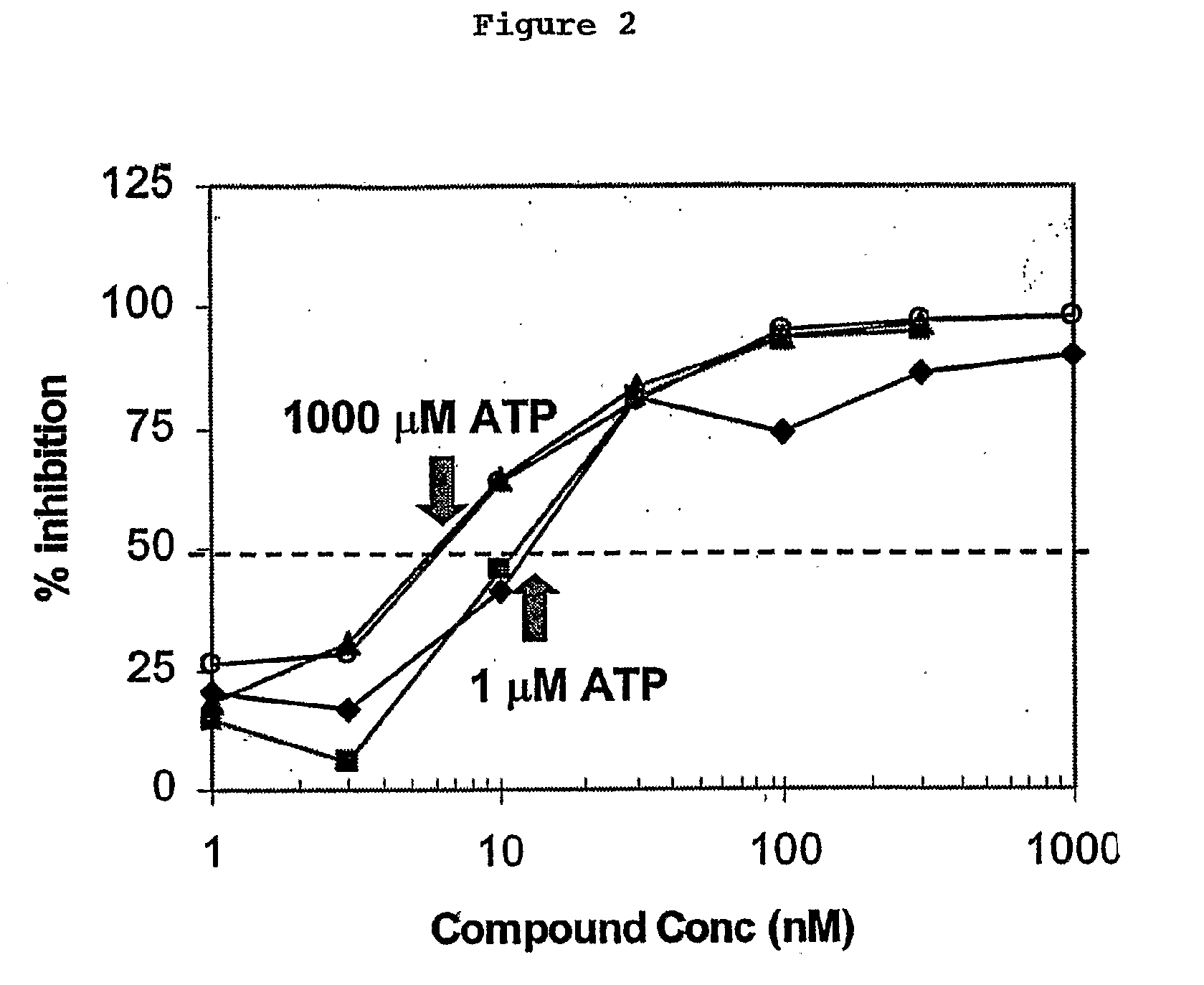Assays to Identify Irreversibly Binding Inhibitors of Receptor Tyrosine Kinases
a technology of receptor tyrosine kinase and inhibitors, which is applied in the field of assays capable of identifying inhibitors of receptor tyrosine kinases, can solve the problems of significant upregulation of kdr on endothelial cells, low kdr, and poor quality of life, and achieve the effect of confirming the irreversible binding of an inhibitor compound
- Summary
- Abstract
- Description
- Claims
- Application Information
AI Technical Summary
Benefits of technology
Problems solved by technology
Method used
Image
Examples
Embodiment Construction
[0032]There are no reported small molecule inhibitors of KDR that irreversibly bind to the kinase. Using computer modeling based upon the published crystal structure of IStructure 7:319-330 (1999)), we developed irreversible binding inhibitor compounds of KDR. These compounds are described in patent application Ser. No. 60 / 573,251, entitled “QUINONE SUBSTITUTED QUINAZOLINE AND QUINOLINE KINASE INHIBITORS”, by inventors Allan Wissner, Bernard Dean Johnson, Heidi Leigh Fraser, Russell George Dushin, Charles Ingalls, Ramaswamy Nilakantan, Middleton Brawner Floyd Jr. and Thomas Naittoli, filed concurrently herewith.
[0033]There are many advantages to an irreversible KDR inhibitor. For one, these inhibitors would not compete with ATP. A tyrosine kinase such as KDR catalyzes the transfer of a phosphate group from a molecule of ATP to a tyrosine residue located on a protein substrate. The inhibitors of KDR so far known in the art are reversible and usually competitive with either ATP or the...
PUM
| Property | Measurement | Unit |
|---|---|---|
| pH | aaaaa | aaaaa |
| pH | aaaaa | aaaaa |
| concentration | aaaaa | aaaaa |
Abstract
Description
Claims
Application Information
 Login to View More
Login to View More - R&D
- Intellectual Property
- Life Sciences
- Materials
- Tech Scout
- Unparalleled Data Quality
- Higher Quality Content
- 60% Fewer Hallucinations
Browse by: Latest US Patents, China's latest patents, Technical Efficacy Thesaurus, Application Domain, Technology Topic, Popular Technical Reports.
© 2025 PatSnap. All rights reserved.Legal|Privacy policy|Modern Slavery Act Transparency Statement|Sitemap|About US| Contact US: help@patsnap.com



